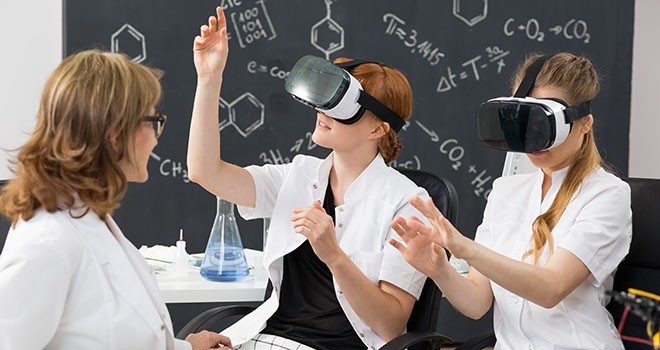Virtual Reality (VR) technology has long been associated with immersive entertainment experiences, but its applications extend far beyond gaming and media. In recent years, VR has emerged as a powerful tool for therapy and education, offering innovative solutions to a wide range of challenges. This article explores the growing role of VR in therapy and education and the potential benefits it offers in these domains.
The Evolution of Virtual Reality Technology
Entertainment Roots
Originally developed for entertainment purposes, VR technology has rapidly evolved since its inception. Early VR systems were bulky, expensive, and primarily used for gaming and simulation. However, advancements in hardware and software have made VR more accessible and versatile, opening up new possibilities for its use in various fields, including therapy and education.
Expansion into Therapy and Education
In recent years, VR has gained traction as a therapeutic tool for treating a variety of physical and mental health conditions. Similarly, educators have begun to explore the potential of VR as a learning tool to enhance engagement and comprehension among students. As VR technology becomes more sophisticated and affordable, its applications in therapy and education are expected to expand further.
Virtual Reality in Therapy
Immersive Environments
One of the key advantages of VR therapy is its ability to create immersive environments that simulate real-world scenarios. This immersive experience can be particularly beneficial for exposure therapy, where patients confront their fears in a controlled environment. For example, VR exposure therapy has been used to treat phobias, PTSD, and anxiety disorders by gradually exposing patients to triggering stimuli in a safe and controlled manner.
Pain Management
VR technology has also shown promise as a non-pharmacological intervention for pain management. By immersing patients in virtual environments designed to promote relaxation and distraction, VR therapy can help alleviate pain and discomfort associated with various medical procedures and chronic conditions. Studies have found that VR interventions can reduce pain intensity and improve patient satisfaction, making it a valuable tool in pain management protocols.
Virtual Reality in Education
Immersive Learning Experiences
In education, VR offers immersive learning experiences that engage students in ways traditional methods cannot. By transporting students to virtual environments related to their curriculum, VR enables experiential learning that stimulates curiosity and fosters deeper understanding. For example, students can explore historical landmarks, conduct virtual science experiments, or interact with complex mathematical concepts in a virtual space.
Accessibility and Inclusivity
VR technology also has the potential to address accessibility and inclusivity challenges in education. By providing alternative learning experiences for students with disabilities or special needs, VR can ensure that all learners have access to quality education. Additionally, VR can break down geographical barriers by connecting students from different parts of the world in virtual classrooms, fostering collaboration and cultural exchange.
Future Directions and Considerations
Technological Advancements
As VR technology continues to evolve, we can expect to see further improvements in hardware capabilities, software development, and content creation. These advancements will make VR more immersive, interactive, and accessible, enhancing its effectiveness as a therapeutic and educational tool.
Ethical and Privacy Concerns
However, the widespread adoption of VR in therapy and education also raises ethical and privacy concerns. It is essential to address issues related to data security, user privacy, and informed consent to ensure the responsible use of VR technology. Additionally, ongoing research is needed to evaluate the long-term effects and efficacy of VR interventions in diverse populations.
Conclusion
In conclusion, Virtual Reality technology is revolutionizing therapy and education by providing immersive and engaging experiences that have the potential to transform lives. From treating mental health disorders to enhancing learning outcomes, VR offers innovative solutions to complex challenges. As VR technology continues to advance, its applications in therapy and education are expected to expand, opening up new possibilities for improving human health and knowledge acquisition.

